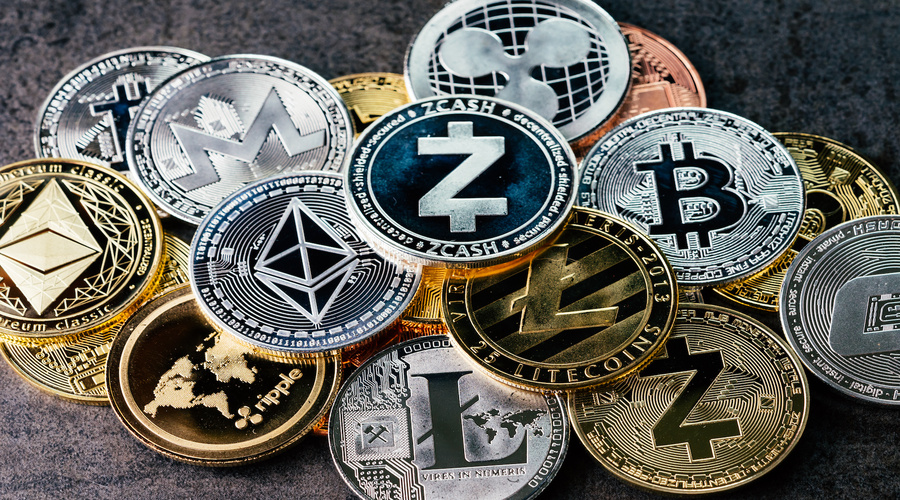When trading cryptocurrencies on an exchange, it’s important to understand the fees involved in each transaction. These fees can vary widely between exchanges and can impact your overall profitability. In this article, we’ll provide an overview of the different types of trading fees you may encounter on a crypto exchange, and offer tips on how to minimize these costs.
Maker and Taker Fees
The most common type of trading fees on a crypto exchange are maker and taker fees. Maker fees are charged when you add liquidity to the order book by placing a limit order that is not immediately filled. Taker fees are charged when you remove liquidity from the order book by placing a market order or filling a limit order that was already on the order book.
Maker fees are typically lower than taker fees, and some exchanges may offer reduced fees or rebates for makers to incentivize adding liquidity to the order book. It’s important to understand the maker and taker fee structure of the exchange you’re using and to consider these fees when placing orders.
Deposit and Withdrawal Fees
In addition to trading fees, some exchanges may charge fees for depositing or withdrawing funds from your account. These fees can vary widely between exchanges and may be charged as a percentage of the deposit or withdrawal amount, or as a flat fee.
It’s important to understand the deposit and withdrawal fee structure of the exchange you’re using, as these fees can impact the overall cost of using the platform. Look for exchanges that offer low or no deposit and withdrawal fees to minimize these costs.
Spread
The spread refers to the difference between the bid and ask prices for a particular cryptocurrency on the exchange. This is essentially the exchange’s profit margin on each trade. While the spread is not a direct fee, it can impact the cost of trading on the exchange.
Look for exchanges with tight bid-ask spreads to minimize this cost. However, be aware that spreads can vary widely depending on the cryptocurrency being traded and the level of liquidity on the exchange.
Margin Fees
If you choose to trade on margin, meaning you borrow funds from the exchange to trade with leverage, you may also incur margin fees. These fees can be charged as a percentage of the borrowed funds or as a flat fee.
It’s important to understand the margin fee structure of the exchange and to consider the cost of trading on margin when making trading decisions.
Volume-Based Fees
Some exchanges may offer volume-based fee structures, where the trading fees decrease as your trading volume increases. This can be a useful way to reduce trading costs if you are a high-volume trader. However, be aware that volume-based fee structures may come with minimum monthly trading volumes or other requirements.
Fees for Derivatives and Futures Trading
If you’re interested in trading derivatives or futures contracts on a crypto exchange, be aware that these instruments may come with additional fees beyond standard trading fees. These fees can include financing fees for holding positions overnight or for a longer period of time, as well as settlement fees for closing out positions.
Network Fees
When transferring cryptocurrencies from one address to another, network fees may be charged to cover the cost of processing the transaction on the blockchain network. These fees are typically paid to miners who process and confirm the transaction. While network fees are not directly related to trading on a crypto exchange, they can impact the overall cost of using the platform.
Loyalty Programs
Some crypto exchanges may offer loyalty programs or rewards for frequent traders. These programs can offer reduced trading fees or other benefits, such as access to premium features or priority customer support. Be sure to check if the exchange you’re using offers a loyalty program and if you’re eligible to participate.
Comparison of Trading Fees Across Exchanges
It’s important to compare trading fees across different exchanges to ensure that you’re getting the best deal. Some exchanges may offer lower trading fees for certain cryptocurrencies or trading pairs, while others may offer lower fees for high-volume traders. Be sure to research the fee structure of multiple exchanges to find the best fit for your trading needs.
Overall, there are many factors to consider when evaluating the trading fees on a crypto exchange. By understanding the different types of fees involved and researching the fee structures of multiple exchanges, you can make informed decisions and minimize your trading costs.
Fee Comparison Tools
There are many tools available online that allow you to compare trading fees across multiple crypto exchanges. These tools can help you find the exchange with the lowest fees for your trading needs, and can also provide insights into the fee structures of different exchanges.
Fee Structures for Staking and Yield Farming
If you’re interested in staking or yield farming on a crypto exchange, be aware that these activities may come with additional fees beyond standard trading fees. These fees can include gas fees for executing transactions on the blockchain, as well as platform fees for using the staking or yield farming services.
Fee Structures for Decentralized Exchanges
Decentralized exchanges (DEXs) operate on a different model than centralized exchanges and may have different fee structures. For example, some DEXs may charge a flat transaction fee, while others may charge a percentage of the transaction value. Be sure to understand the fee structure of the DEX you’re using and factor in any additional fees for using a decentralized platform.
Fee Structures for OTC Trading
If you’re interested in trading large volumes of cryptocurrency, you may consider using an over-the-counter (OTC) trading desk. OTC desks typically offer personalized service and may have different fee structures than traditional exchanges. Be sure to understand the fee structure of the OTC desk you’re using and factor in any additional costs.
Minimizing Trading Fees
To minimize the cost of trading on a crypto exchange, there are a few strategies you can employ. First, consider using an exchange with low trading fees, or one that offers rebates for makers. Second, consider trading with limit orders instead of market orders to avoid taker fees.
Finally, consider using an exchange that offers reduced or waived deposit and withdrawal fees, or that allows for free transfers between different cryptocurrencies on the platform.
Conclusion
Understanding the trading fees involved in using a crypto exchange is an important part of maximizing your profitability and minimizing your costs. By considering the different types of fees involved and employing strategies to minimize these costs, you can make informed decisions and achieve your investment goals.




